Video reflection + social interaction
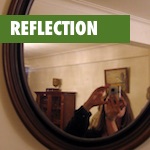 The role of feedback and reflection are key strategies in best middle level practice for students and educators alike. Finding engaging ways for this exchange to take place in meaningful and relevant ways is, for many of us, a challenge.
The role of feedback and reflection are key strategies in best middle level practice for students and educators alike. Finding engaging ways for this exchange to take place in meaningful and relevant ways is, for many of us, a challenge.
Enter Flipgrid.
What is Flipgrid?
Billed as a video discussion platform, flipgrid has been a game-changer for encouraging learners to get more comfortable sharing their reflections with classmates. Each learner records their own video response to a group question. The videos are all available for all learners to watch, reply to or simply “like”.
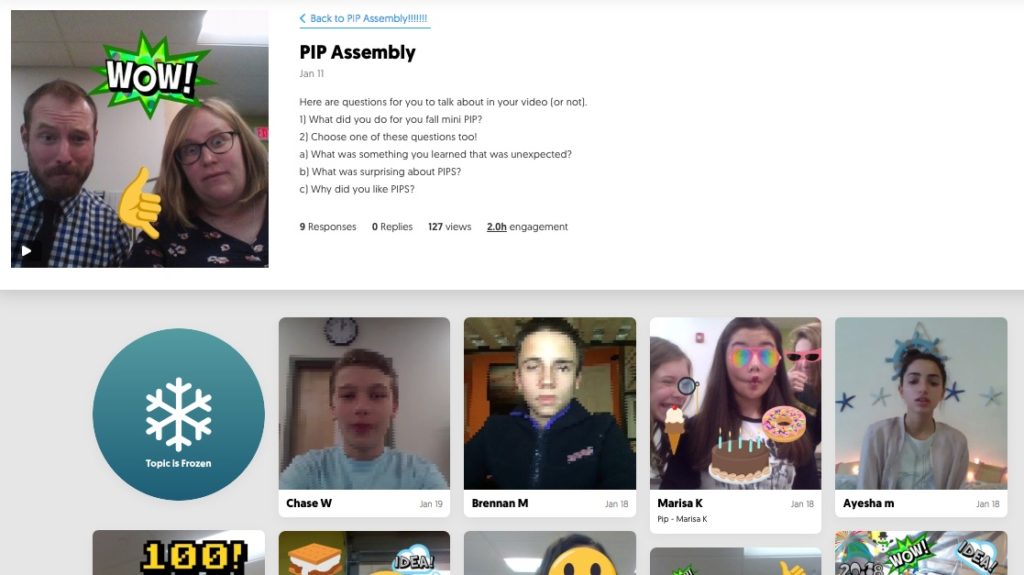
Students in particular, seem drawn to Flipgrid not only because of its functionality but because it echoes popular social media platforms. Likes, replies, hashtags and the ability to enhance/manipulate your images seems to resonate. (Think: Snapchat, or instagram). This also feeds into the middle-level urge to explore different aspects of your identity.
Here’s what students say about Flipgrid and reflection:
“FlipGrid can be an easier method to express your thoughts on a topic. It is much quicker than writing a reflection or idea down, and of course, you don’t have to worry about grammar mistakes! I enjoy FlipGrid because it is a helpful way to get my thoughts out effectively and quickly in a meaningful way that makes sense to everyone.” ~ A Colchester Middle School 8th grader
“FlipGrid is a great way to spread ideas in an interesting and fun way. It is enjoyable to go through and watch other videos.” ~ A Colchester Middle School 7th grader
1. A new avenue for students to provide feedback on curriculum
Students at Shelburne Community School have been engaged in project-based learning, but are interested in how to maximize student voice and choice in the process. Educators Sam Nelson and Diana Rich have used Flipgrid to check in with students and capture moments of reflection along the way. What a great piece of evidence to include in a PLP!
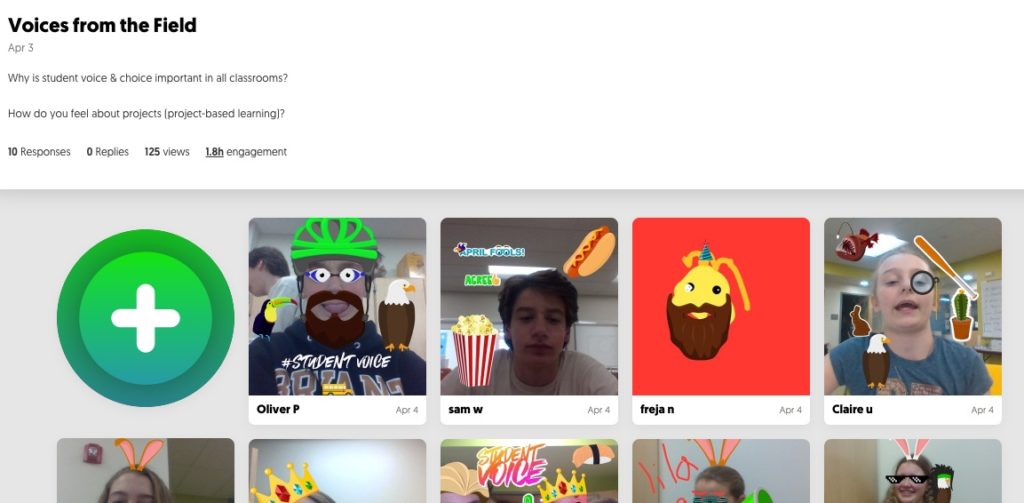
The 90-second video window pushes students to be concise. They share:
- what’s on their mind
- what they might need for support
- questions for classmates
- and where they think they will go next with their learning.
It’s always great to hear what students think about their learning. In this case the feedback was specific to a newer structure of learning.
From an organizational lens, this type of evidence would make for great conversation at a faculty meeting. The videos capture true emotions and thought processes.
From a workflow lens, it can be difficult to check in with all students in a given class period. Flipgrid extends that opportunity for students to share their thoughts and progress, needs, and wonderings on their own time and in their own way. The real power here is students can respond to each other in comment threads and capture a rich dialog focused on learning. The asynchronous, out-of-classroom window for capturing syncs up with the middle school brain.
Similarly, Robyn Alvin from Stowe Middle School posed three questions to her students after a stations learning experience.
2. A new avenue for reflection between colleagues

Shelburne Community School recently hosted a visit for some fellow Vermont educators. After the visit, the hosting educator was interested in gathering some feedback from the visitors. Flipgrid provided an easy avenue to complete the loop and add to the conversation. It functioned like a “super-easy digital guestbook”.
Could you see using this tool as an exit ticket for school visits or exhibitions?
3. Build a closer cohort during distance learning
The social connection many of us crave with our learning can sometime be absent in the online world. Many times we have professional learning opportunities that are distant, online, or far and few between. But the addition of video conferencing can greatly improve these opportunities.
There is just something about being able to see someone’s face, hear your name mentioned in a comment, and understand tone and expression. It’s also easy to go back and listen, have the conversations archived and easily sharable.
The VT Learning Lab has taken advantage of the power of Flipgrid to support the personal and social experience of this learning cohort.

Here, Flipgrid was used as a virtual introduction and sharing of one’s action research question prior to the start of the class. Just like students, adult learners want to know who’s in their class and what they’ve signed up for. This quick video introduction sets the tone for building a supportive and collaborative cohort.
Similarly, the simplicity allows for quick updates along the way. Learning Lab participants share regular updates with their cohort.
So how is this changing learning?
If we think of the components of the reflection — description, feeling, evaluation, and conclusion — it’s that final step that makes an impact. ACTIONS. As students become more competent in their reflection they will have clearer ideas and action steps for their next phase of learning.
What tools besides Flipgrid have you seen be successful in collecting these types of reflections?
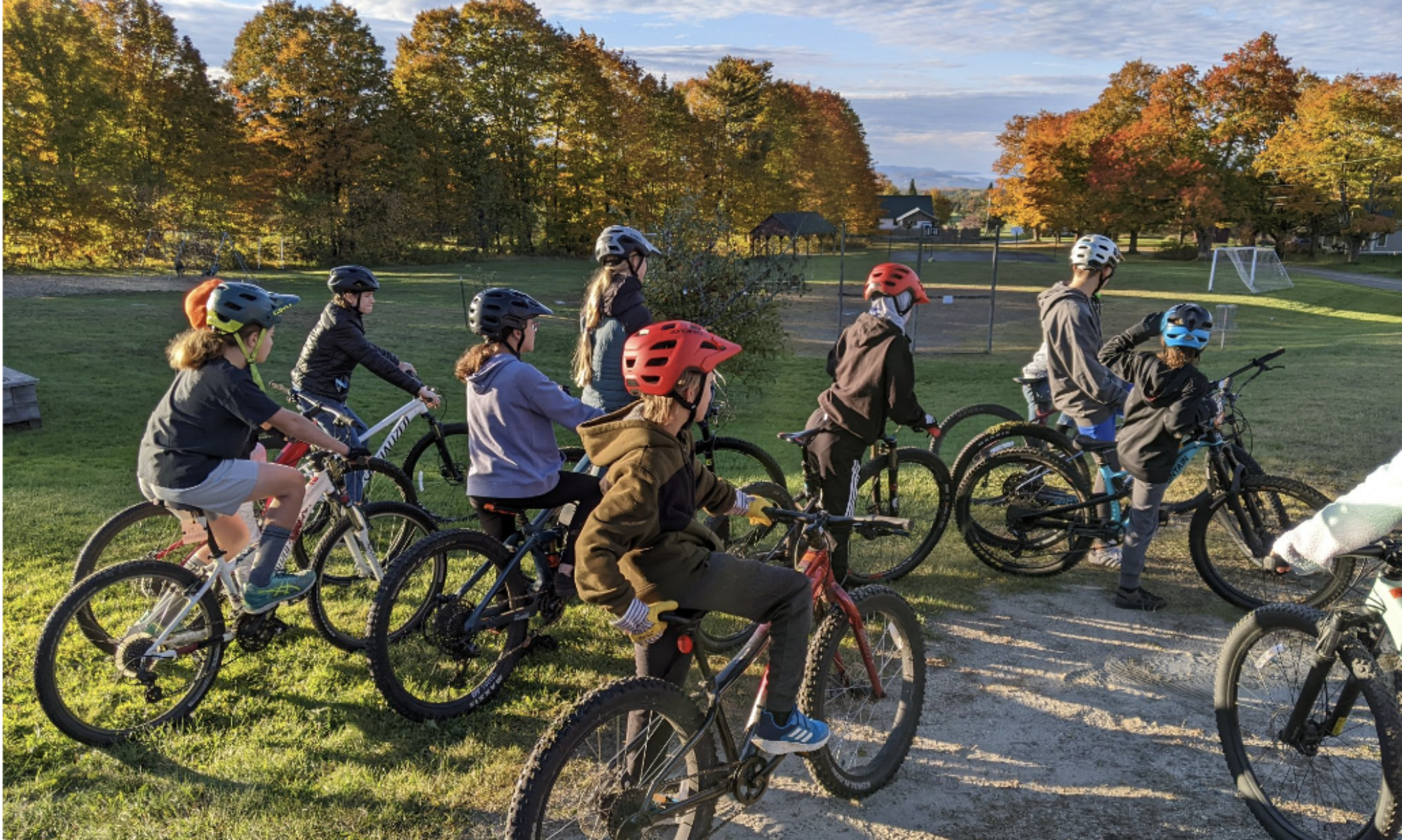

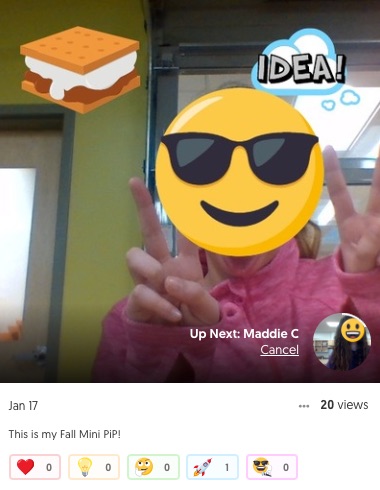
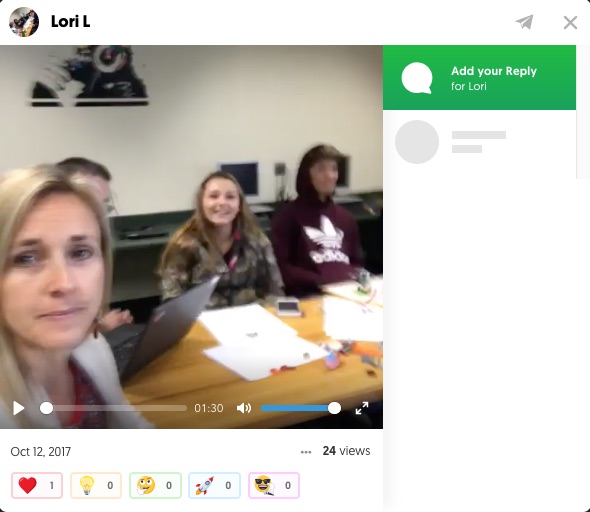
Can we share on our website?
Absolutely feel free to share our content with appropriate attribution. Thanks!